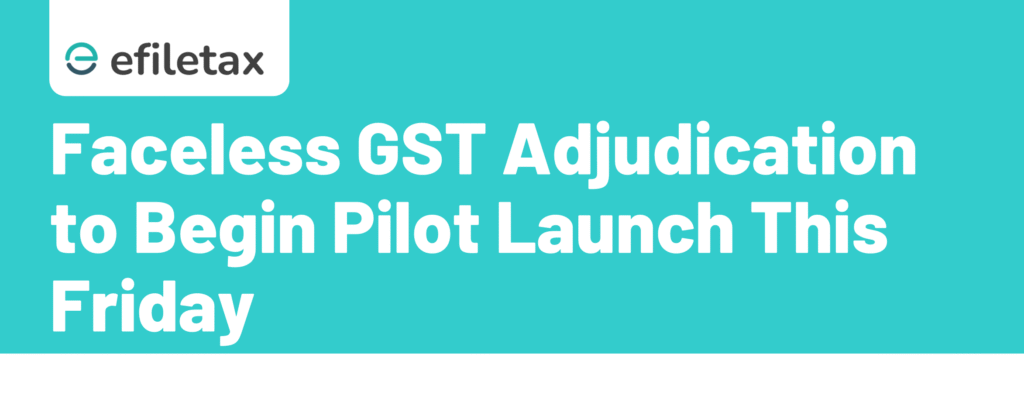
Faceless GST Adjudication Pilot: Key Reform Explained
This move aims to reduce personal interaction, bring transparency, and streamline GST assessments and penalty proceedings.
What Is Faceless GST Adjudication?
Faceless GST adjudication is a process where:
- Personal hearings and submissions are conducted online
- Adjudicating officers are randomly assigned
- Identity of officers remains anonymous
Objective: Curb discretion, ensure uniformity, reduce corruption, and enable e-governance.
Pilot Rollout: What We Know So Far
| Feature | Details |
|---|---|
| Start Date | Friday (expected: 2 August 2025) |
| Pilot Location | One or more State GST zones (e.g., Rajasthan/Punjab) |
| Scope | Select adjudication cases under GST laws |
| Format | Online portal, document uploads, virtual hearings |
| Legal Basis | CGST Sections 73, 74, 75 + procedural reforms |
| Alignment | With Income Tax faceless model |
| Expected Benefits | Speed, transparency, less interference |
Why Faceless GST Adjudication Matters
This reform targets long-standing pain points in GST adjudication:
- Reduced discretion in issuing orders
- Time-bound hearings and decisions
- Evidence-based scrutiny instead of oral arguments
- Audit trail of every step, reducing scope for bias
Expert Tip:
For taxpayers under scrutiny, maintaining complete and timely digital records (invoice trail, GSTR filings, reconciliations) is now more critical than ever.
Legal Backing and Institutional Support
Faceless adjudication finds indirect legal support under:
- Section 75(4) of CGST Act: Personal hearing required only on request
- Section 160: Procedural errors don’t invalidate adjudication if intent is clear
This initiative is also in line with CBIC’s vision for digitised enforcement, as seen in e-scrutiny and automated GST return scrutiny modules.
Challenges to Watch For
While promising, faceless adjudication may face early issues like:
- Portal readiness and upload limits
- Lack of taxpayer digital literacy
- Possible delays in clarifications during hearings
- Concerns over fairness without face-to-face interaction
Efiletax Advice:
Engage a qualified tax consultant during adjudication. Errors in online submission or missing annexures can lead to avoidable penalties or adverse rulings.
Conclusion: A Step Towards GST 2.0
Faceless GST adjudication is a strong step toward process reform and institutional accountability. If successfully piloted, it could become the norm across India — mirroring the faceless income tax system.
Efiletax will continue tracking this reform and help taxpayers prepare responses, file representations, and comply digitally through our advisory and representation services.
Use Efiletax for GST Representation & Appeals
Facing a GST notice? Efiletax offers expert help for replies, online hearing assistance, and faceless adjudication support.
FAQs: Faceless GST Adjudication System
Q1. Is faceless adjudication applicable to all GST cases?
No, currently it is being piloted in select zones and cases. A broader rollout may follow after review.
Q2. Will personal hearings still be allowed?
Yes, but only on written request.
Q3. What happens if I miss uploading a reply or document?
The system may proceed ex-parte. Always check dashboard notifications and reply within time.
Q4. Can I challenge the faceless order?
Yes, appeals can be filed under Section 107 of CGST Act through normal appellate channels.
Summary
The State GST Department is launching a pilot for faceless GST adjudication from Friday. This reform will digitise hearings, reduce discretion, and promote transparency. Taxpayers must now rely more on digital compliance and timely submissions to avoid penalties or adverse orders.